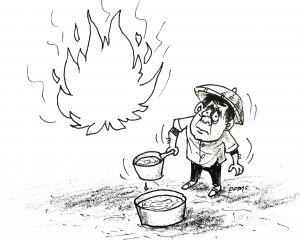As March marks Fire Prevention Month, individuals and communities must reflect on the significance of fire safety measures and take necessary steps to mitigate the risks of fire hazards. Observing Fire Prevention Month should entail more than mere lip service; it demands tangible actions and a collective commitment to safeguard lives and property.
First and foremost, education must be at the forefront of fire prevention efforts. It is not enough to simply raise awareness about fire safety; individuals need to be equipped with the knowledge and skills to prevent fires and respond effectively in the event of an emergency. This entails disseminating information about fire hazards, proper fire prevention practices, and evacuation procedures.
Moreover, Fire Prevention Month should catalyze rigorous enforcement of fire safety regulations and building codes. Too often, lax enforcement and complacency contribute to preventable fires that result in devastating consequences. Authorities must prioritize inspections, ensure compliance with safety standards, and hold accountable those who neglect their responsibility to maintain safe environments.
Ensuring a culture of preparedness is essential in mitigating the impact of fires. This involves not only having fire extinguishers and smoke detectors readily available in homes, offices, and other public places but also developing and rehearsing evacuation plans. Communities should organize drills and exercises to simulate fire scenarios and ensure that residents know how to respond swiftly and effectively.
Fire Prevention Month presents an opportunity for collaboration among residents, including government agencies, fire departments, businesses, and civil society organizations. By pooling resources and expertise, these entities can implement comprehensive fire prevention campaigns, distribute safety materials, and provide training sessions to empower individuals to become active agents of fire safety.
It is not enough to pay lip service to the cause for a single month out of the year; rather, fire prevention should be ingrained in our collective consciousness year-round. We need to create a culture of vigilance, education, preparedness, and collaboration to mitigate the risks of fires and ensure the safety and well-being of our communities.




